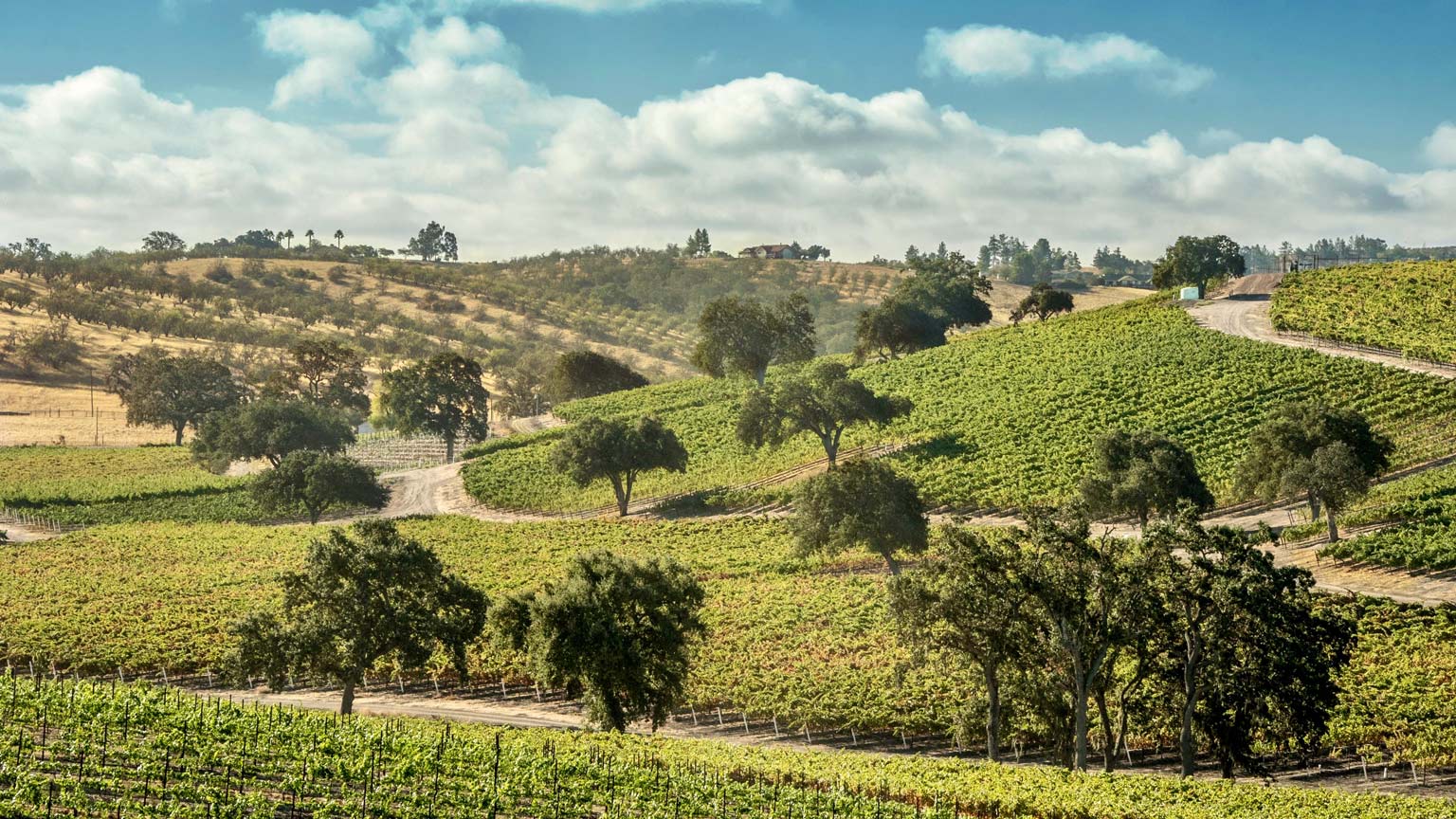Adelaida District
With similar soils found in Bordeaux and Châteauneuf-du-Pape, the Adelaida District produces world-class Cabernet Sauvignon, and Syrah blends that are “can't miss”.
The Adelaida is the wettest of the Paso Robles AVAs, which traditionally meant it was one of the few places in California that had enough rainfall to produce two grain crops a year. But since the 1960’s it’s been recognized as a unique place in California to produce award-winning wines due to its limestone rich soils.
The warm days here mean grapes can ripen easily, but due to the limestone rich soils and the cooling effects of the Templeton gap, the grapes also retain their freshness and acidity. The result? Powerful yet elegant wines that will defy expectations.
Adelaida District Wines
Few places in the world can master both Rhône blends and Bordeaux blends, but the Adelaida District is one.
The cool nights and limestone soils produce perfumed and elegant Cabernet Sauvignon with structure, ripe tannins, and acidity, meaning many of them can improve for decades to come.
That freshness is in the Syrah, Grenache, and Mourvèdre blends, many of which have higher acidity levels than those found in Châteauneuf-du-Pape. These spiced black plum and full-bodied wines with minerality are extraordinary and can cellar just as long as the top French wines.
If you're looking for dry white wines, you won't be disappointed. Fragrant, sumptuous yet elegant Viogniers, and white Rhône blends of Grenache Blanc, Marsanne, and Roussanne. These wines have a linear and refreshing style with flavors of honey, spice, and a mineral backbone.
Terroir
The combination of limestone, elevations up to 2200 feet (670 m) in the Santa Lucia Mountains, and the wind and fog pouring in from the Templeton Gap make the Adelaida district one of the best places to make outstanding wine.
With over 30 inches (760 mm) of rain a year, it is the wettest region in Paso Robles, meaning many vineyards are dry-farmed (rare in California).
Limestone soils retain water in the drier summer months meaning vines can thrive despite the lack of rain during July and August. This, along with the alkaline limestone soils (pH above 7), means that grapes hold on to their acidity, allowing wines to be super fresh, despite daytime temperatures that can exceed 100°F (38°C) in summer.
That unique limestone soil also means more flavor and texture coming through in the skins of grapes, meaning deeply colored, tannic, yet highly flavorful red wines.
The Fog Monster, as the locals have named the marine fog rolling through the Templeton Gap from the Pacific Ocean, covers low-lying vineyards, helping keep things cool.
If grape growers are looking for warmth, like when planting Grenache, they plant above the fog line (about 1000 ft or 300 m). But if they want to plant a grape that doesn't need as much heat, like Viognier, they can plant below the fog line.
Notable Wineries
DAOU - One of the best Cabernet Sauvignons in the USA is produced by Daniel Daou since planting in 2007.
Tablas Creek - One of the first pioneers of Rhône varieties in California, Tablas Creek has had a partnership with the family that owns the renowned Châteauneuf-du-Pape winery Beaucastel since 1987.
Adelaida Vineyards - With a history going back to the 1960s when the first vines (Pinot Noir) were planted in Adelaida District, this winery is a great place to check out Pinot Noir and Chardonnay.
Quick Facts:
- Major Varieties: Cabernet Sauvignon, Syrah, Grenache, Marsanne, Roussanne, Viognier
- Vineyard acres: 800 (323 ha)
- Established: 2014
- Elevation range: 900-2200 feet (275-670 m)
- Total area: 53,100 acres (21,500 ha)
- Diurnal Shift: 25°F (14°C)
- Annual rainfall: 25-35 inches (635-890 mm)
- Soils: Limestone and Calcareous
SOURCES























